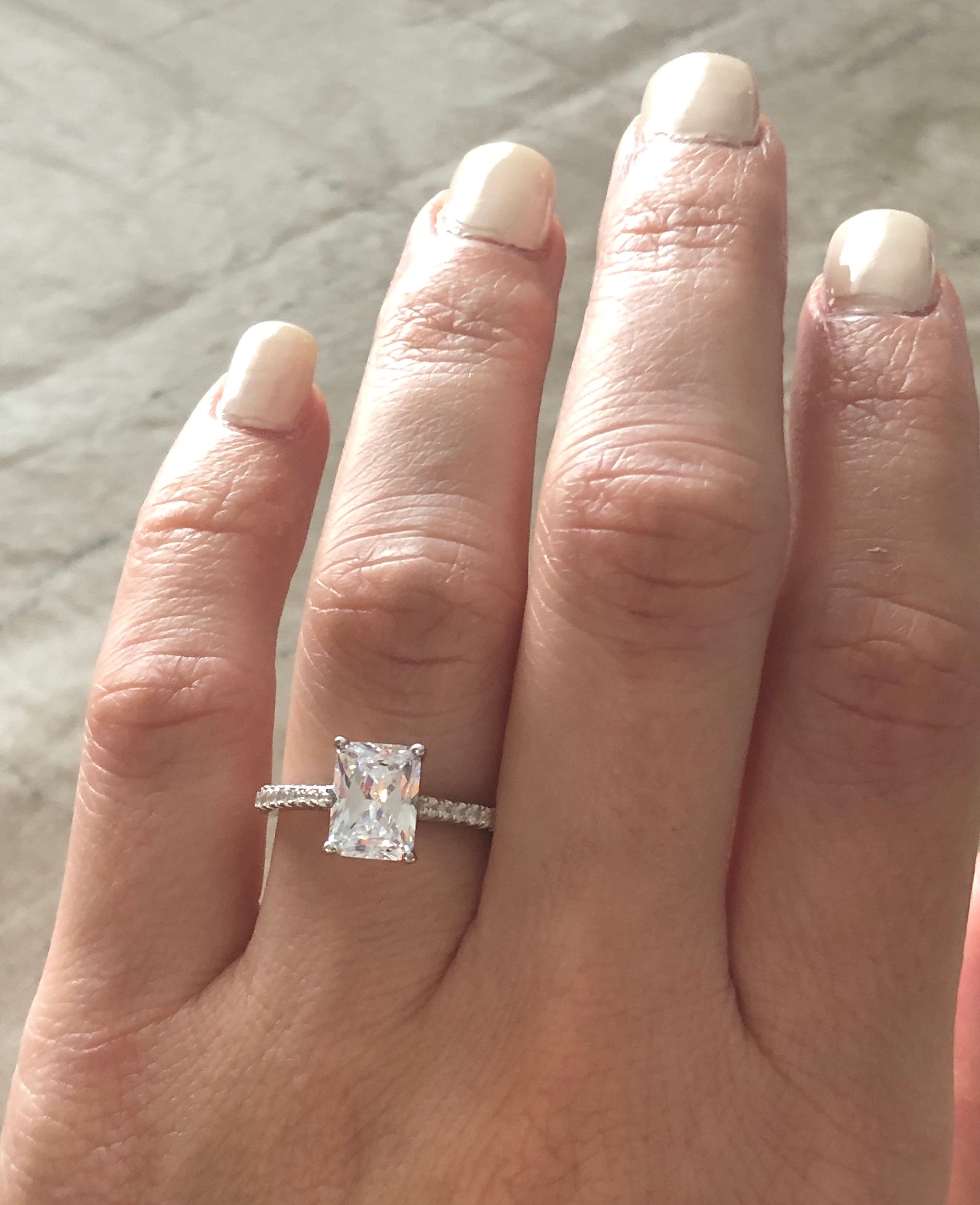

There are instances when an Asscher cut costs more than a radiant, but in general, you can save money by opting for an Asscher instead of a radiant cut. You’ll find both cuts come in a range of prices. This radiant cut, with the same grades from the GIA, is listed for $4,690. That’s a 13 percent increase in price for a radiant cut.Īt Blue Nile, this one-carat Asscher cut, with an F color and VS2 clarity, costs $4,390. For a radiant cut of the same quality, the average price is $3,402. Both of these factors increase the price of radiant cuts.įor example, the average price of a one-carat Asscher cut with an H color grade and SI1 clarity from James Allen is $3,013. There is lower demand for Asscher cuts compared to radiant, and radiants have more brilliance. PriceĪsscher cuts are generally less expensive than radiant cuts. Brilliants have more fire than step-cuts, so if you’re searching for a diamond that will display a rainbow effect, opt for a radiant versus Asscher cut. It will still disperse white light, but it won’t be as noticeable compared to the brilliant radiant cut. In fact, the brilliance of an Asscher cut falls below many cuts, including oval, radiant, princess, and round.īrilliant cuts have the best light performance, so the step-cut facets of Asscher diamonds aren’t designed to exhibit this trait. Fire is a similar effect but involves white light dispersing into a rainbow of colors.Īsscher cuts don’t have strong brilliance. A diamond with poor brilliance will leak light through its pavilion and sides, so it won’t sparkle when the viewer twirls it. Brilliance and FireĪ diamond’s brilliance refers to how well it collects and returns white light to the viewer. In the case of Asscher cuts, that’s the ratio needed for an excellent cut. The latter won’t look like a square, but the GIA defines any ratio of 1.00-1.05 as square. The diamond will have a clear rectangular shape but won’t be too elongated.Īsscher cuts can have a length to width ratio of 1.00 to greater than 1.08. A ratio of 1.03 isn’t technically a square, but the naked eye won’t notice the difference in its lengths and widths.įor a rectangular radiant, 1.20-1.30 is best. The optimal length-to-width ratio for square radiants is between 1.00-1.03. Some are square, and others are rectangular. Shapeīuyers often fail to distinguish between cut and shape.Ī diamond’s cut refers to its facet pattern and quality and how it interacts with light, while shape refers to its outline and differences in lengths, widths, and edges.Ī benefit of radiant cuts is they come in multiple shapes. Let’s explore these qualities and more in detail so you’ll know which cut you should choose for your ring. They pair better with certain types of settings, have unique shapes, and show color differently. How are Asscher and Radiant Cuts Different?Īsscher and radiant cuts may look similar at first glance, but the two have several differences. The result was a diamond that has a similar overall shape as emerald cuts but facets similar to a round cut.

Henry Grossbard created it in the 1970s by combining the methods used to design emerald and brilliant cuts. Radiant cuts were the first diamond with a square shape and brilliant facet pattern on both the pavilion and crown. They’re beveled in a way that removes sharp points and instead creates diagonal edges on each end. The facets are cut in multiple sizes and angles, so the center often appears like crushed ice.Ī distinguishing feature is its cropped corners. They have 70 facets which are designed to maximize white light return. Radiant cut diamonds have a brilliant cut and a square or rectangular shape. They also created the Royal Asscher cut, which has 74 facets. The Asscher cut was developed by the Asscher brothers in the early 1900s. The difference is its square shape compared to the elongated design of emeralds. It’s four corners are beveled, creating an additional four sides that mimic the shape of an emerald cut. Its straight-edged facets have the same length and width. This design emphasizes its clarity in favor of brilliance. It’s a step-cut diamond, which means its 58 facets are layered in a way that gives it a high crown and deep pavilion. What is an Asscher Cut Diamond?Īsscher cut diamonds have a square shape with eight sides. Let’s compare Asscher versus radiant cuts across the most important aspects of a diamond, including their brilliance, clarity, durability, and more. Two cuts commonly used as the center stone in engagement rings or as accents in a piece of jewelry are Asscher and radiant cuts. There are many ways diamonds are cut that result in different shapes. Choosing the right cut for your diamond involves understanding how the cut affects its appearance and light performance.


 0 kommentar(er)
0 kommentar(er)
